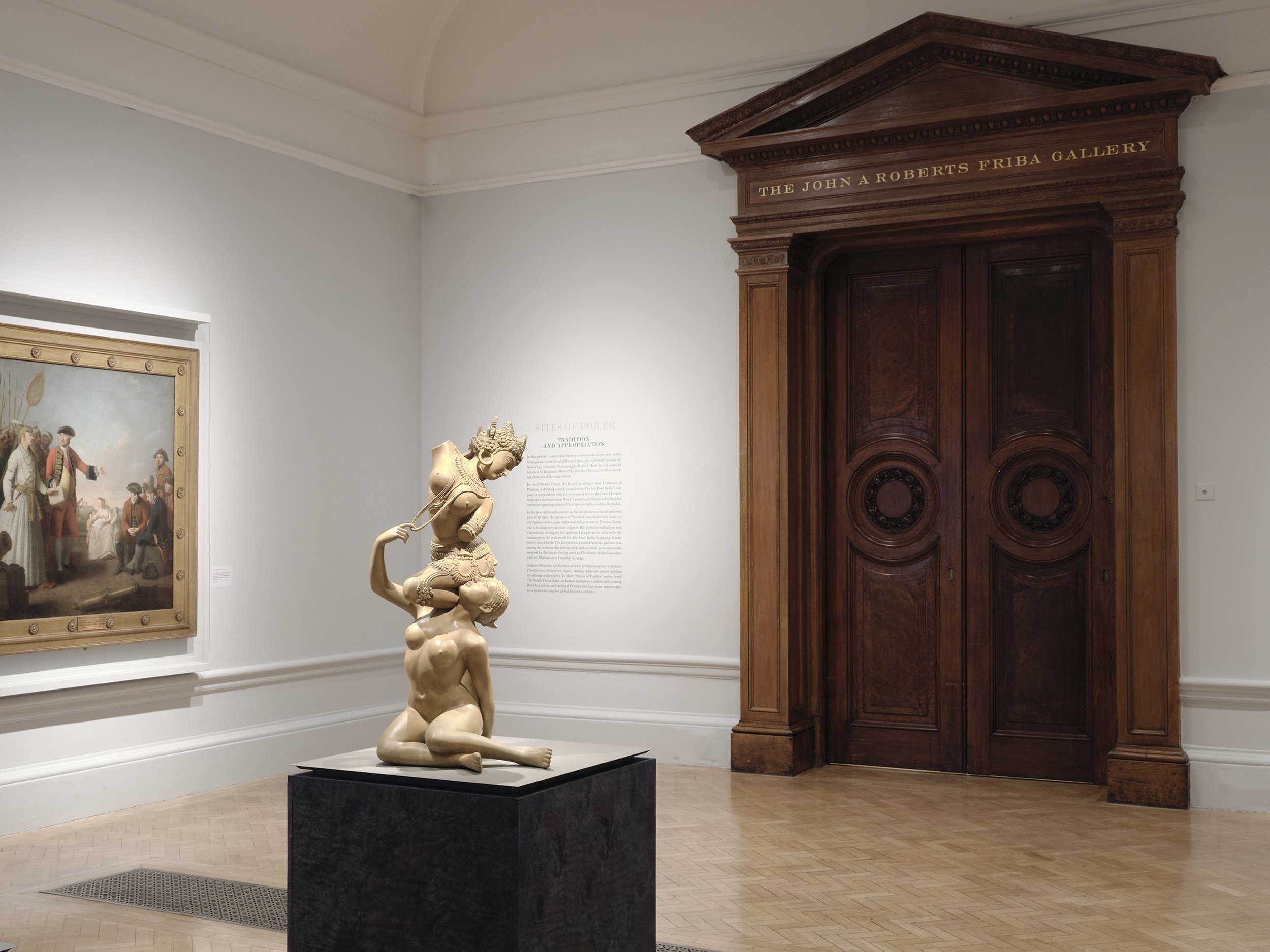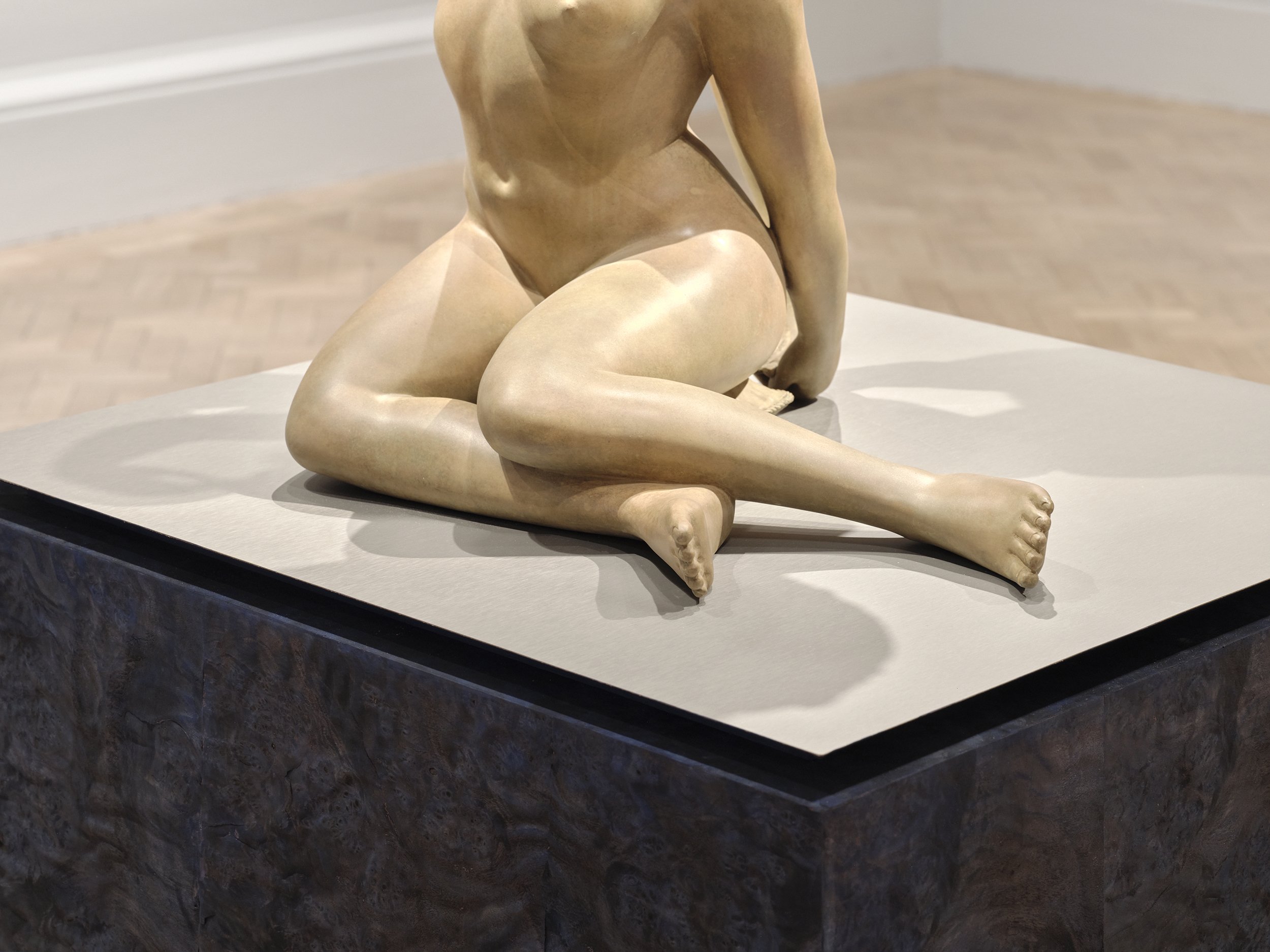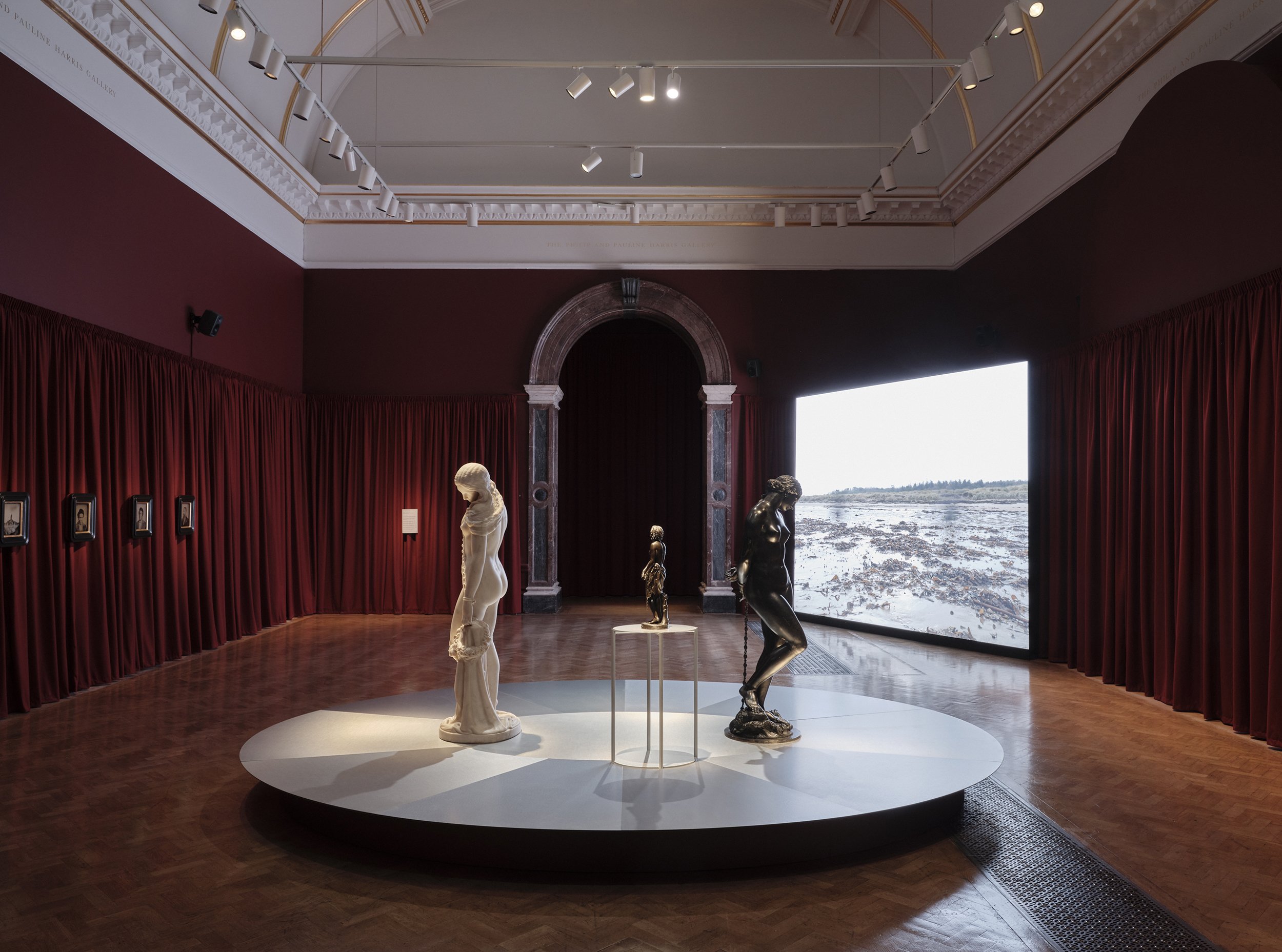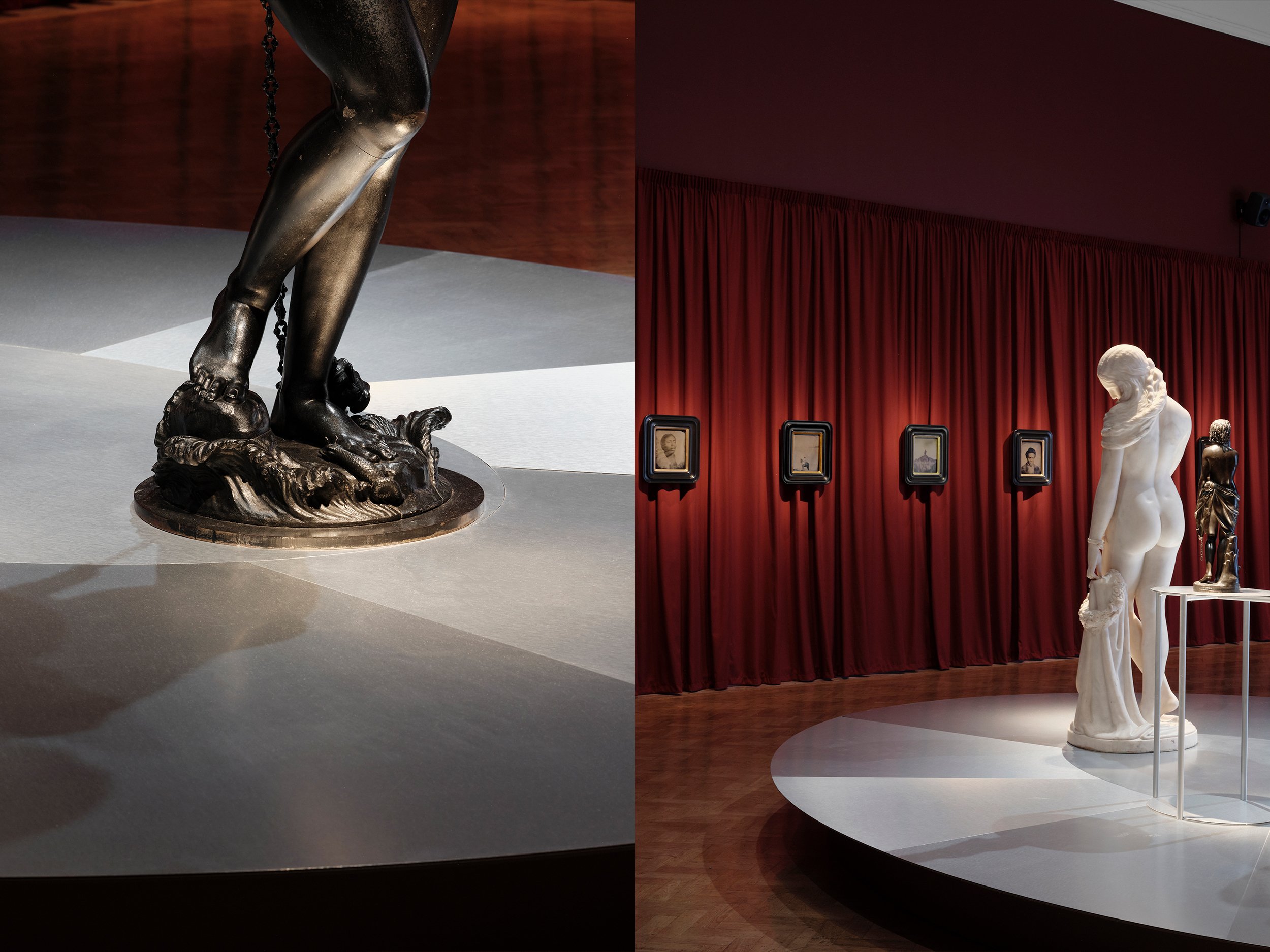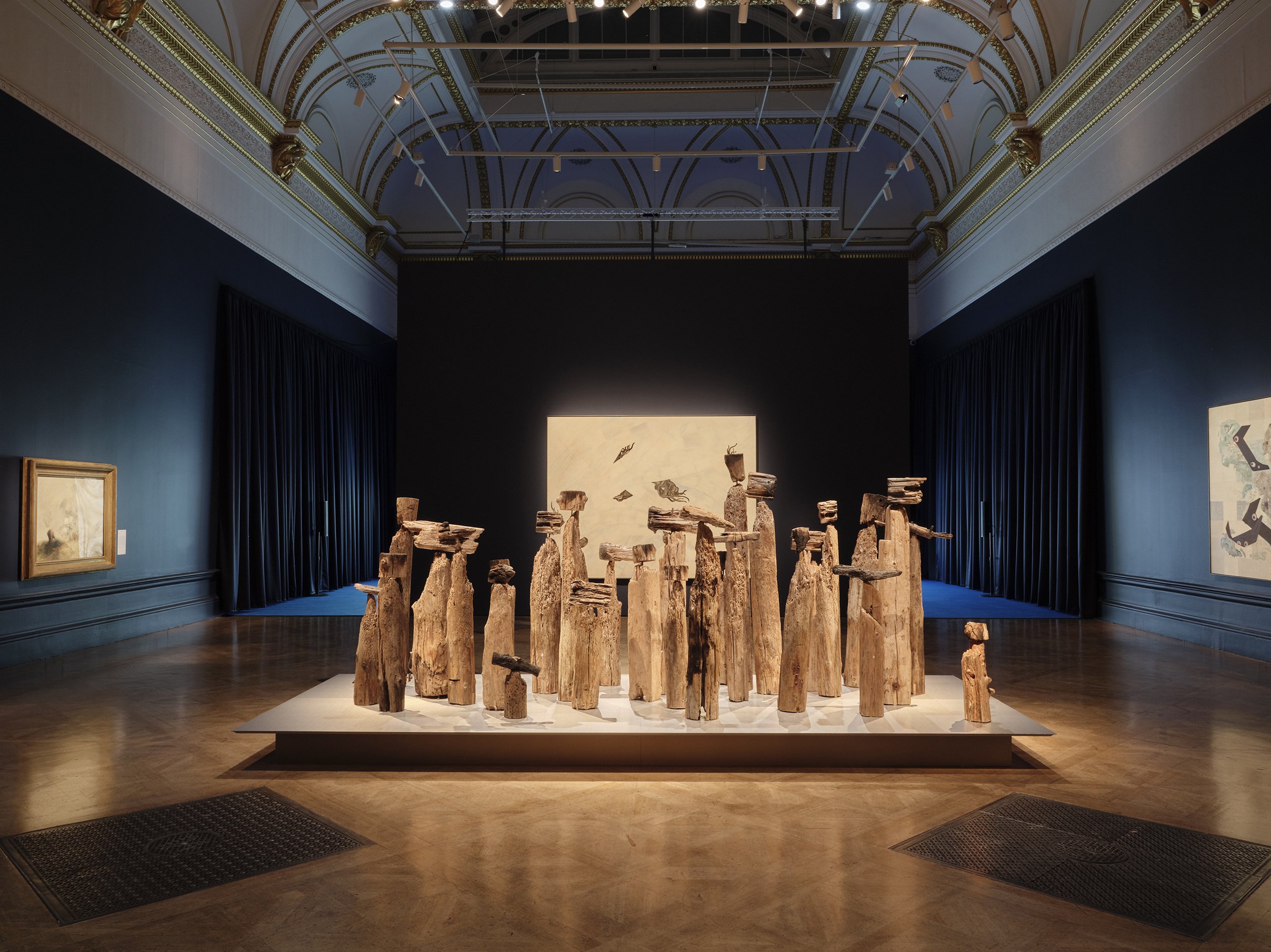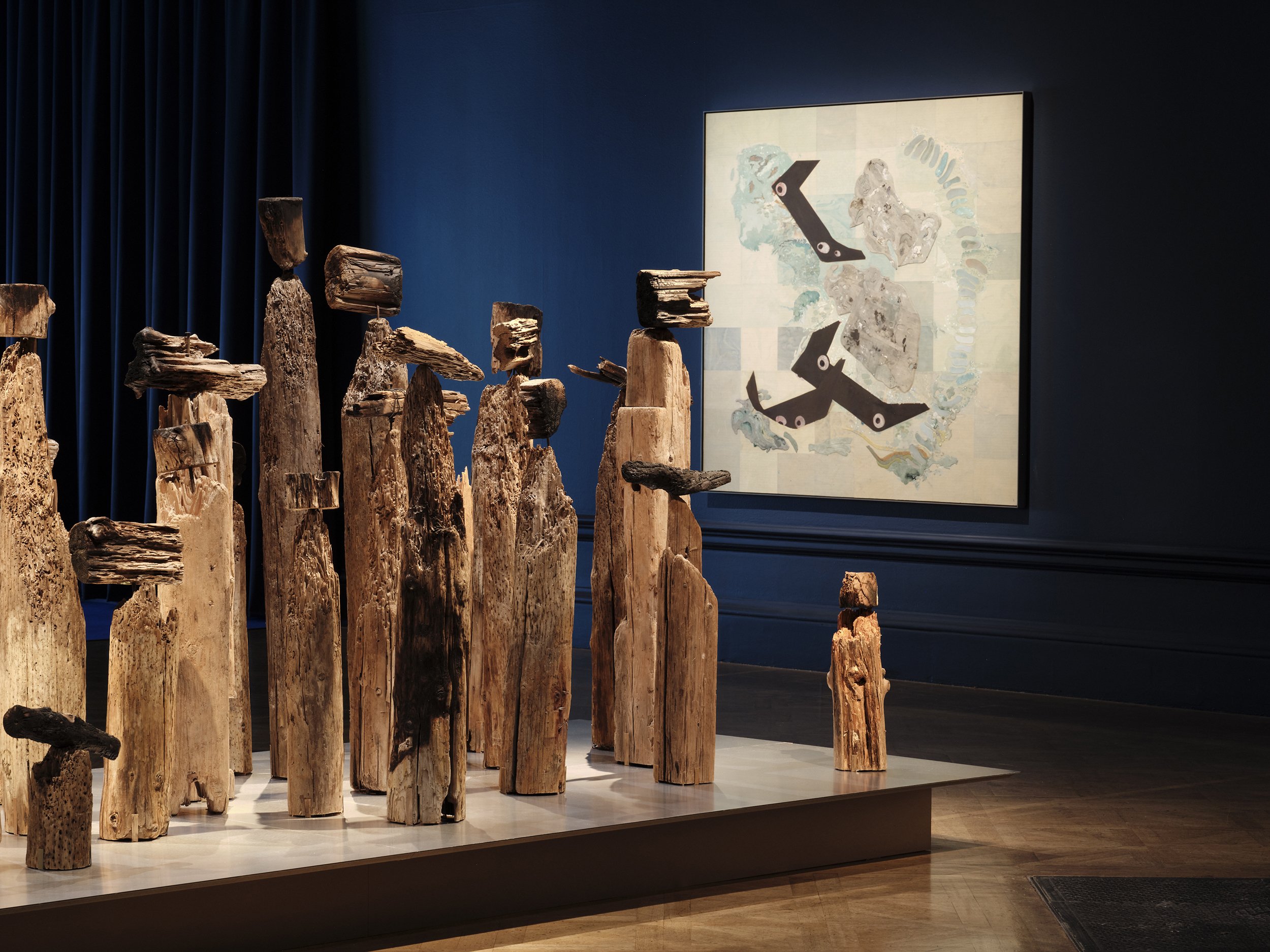Entangled Pasts, 1760-now: Art, Colonialism and Change
Royal Academy of Arts
Date: 2024
A layered design that sets the scene for contemplation and forthright conversation.
Installation view of ‘Entangled Pasts, 1768–now. Art, Colonialism and Change’ at the Royal Academy of Arts, London.
Photos: Thomas Adank
Entangled Pasts, 1768-now, offers an open-ended examination of the relationship between art, slavery and colonialism – and the Royal Academy of Arts’ role in forging these histories.
JA Projects transformed the Royal Academy’s main galleries into an immersive – often subversive – backdrop to more than 100 artworks, spanning over 250 years of history from the Academy’s foundation in 1768 to the present day.
Through the sensitive consideration of arrangement, material and colour, the exhibition design frames a dialogue between works by historic artists – Joshua Reynolds, Thomas Gainsborough, John Singleton Copley and JMW Turner Et al. – and their contemporary equivalents – Frank Bowling, Sonia Boyce, Isaac Julien, Hew Locke, Yinka Shonibare and Kara Walker et al.
A rebalancing of power
From the opening moment, the design sets out to challenge historic power dynamics. In the Royal Academy’s Central (octagonal) Hall, eight canonical giants of Western art history – the likes of Da Vinci, Titian, Wren and Reynolds – have presided in bust form for centuries, not merely displayed but woven into the very fabric of the building.
In response, the design supported the wall display of portraits of Black figures and situated at the centre of the room Francis Harwood’s depiction of a Black man sculpted from Black Stone. Uncomfortable with this singular Black figure being overlooked by eight busts of white men, JA projects covered four of the upper busts with mirrors that instead reflected Harwood’s bust at height – an intervention that puts both Black and white figures in conversation with each other at an equal level.
The intervention was considered an artwork in itself, earning the honour of the exhibition’s curators including a dedicated description, and extending JA Projects’ ongoing enquiry into Black representation in public space.
Installation view of ‘Entangled Pasts, 1768–now. Art, Colonialism and Change’ at the Royal Academy of Arts, London.
Photos: Thomas Adank
Foundations of triumph
A series of exhibition plinths were made from a walnut timber burr which, as well as providing an exquisite and intricate texture, had an allegorical resonance; a burr being formed when the grain of the wood grows around a foreign object or infection – a visible manifestation of resilience in response to externally inflicted trauma that has a clear parallel with the exhibition’s subject and Britain's historic impact overseas.
The burr plinths also directly reference the architecture of the Royal Academy itself and the richly figured 19th-century gallery doors. This builds on JA Projects’ desire to make connections between the work on show and the context of its display, whilst also providing an appropriately poetic foundation for objects that represent triumph over trauma.
Installation view of ‘Entangled Pasts, 1768–now. Art, Colonialism and Change’ at the Royal Academy of Arts, London.
Photos: Thomas Adank
A contemporary shade of Britain
Responding to the self-reflective content of Entangled Pasts, the colour palette of the exhibition offered a contemporary take on Britain's imperial identity, combining blacks and reflective metals with the more traditional (Union Jack) palette of red, white and blue.
In one exhibition section, blue stained plinths with slick metallic tops supported sculptures by Thomas Bank and Shazhia Skikander. The specific shade of blue was a result of research into materials synonymous with European colonialism, in this case indigo, which both as a colour and a commodity has a complex legacy…
The Greek term 'Indikon', meaning 'from India', gave its name to the deep blue pigment that stained heavy twilled cotton cloth a rich shade. Widely used in pre-colonial cultures in the Americas and Asia, this pigment became a driving force behind colonial expansion in the Americas in response to demand from Europe. Tragically, this demand led to the enslavement of people who were forced to cultivate it alongside other cash crops (such as cotton) in the West Indies.
By using this specific shade of blue, the design situated a discussion concerning the art of Britain within the global context of trade and exploitation.
Installation view of ‘Entangled Pasts, 1768–now. Art, Colonialism and Change’ at the Royal Academy of Arts, London, showing El Anatsui Hon RA, Akua’s Surviving Children, 1996, Courtesy of the artist and October Gallery and Sir John Akomfrah CBE RA, Vertigo Sea, 2015.
Photos: Thomas Adank
Where to from here?
The overall result was a sense of depth and purpose, prompting emotional responses and moments of reflection. Visitors were encouraged to make connections between different works, explore alternative narratives to conventional Western perspectives on history, and untangle past from present.
By the time visitors emerged from the exhibition into the light of Lubaina Himid’s Naming the Money (2004), they had become not just a viewer but a participant, empowered to critique age-old assumptions and to consider their role in shaping a shared future.
“From the beginning, JA Projects understood what we were aiming for in terms of drawing out thematic and visual connections between artworks from the present and historic past. The result is a highly poetic and moving sequence of spaces that gently guide the visitor to think in new ways about the entanglement of art and colonial power.”
– Dr Cora Gilroy-Ware, co-curator of Entangled Pasts and Associate Professor in the History of Art, University of Oxford
Core Team
JA Projects, Record Lighting, Unyimeabasi Udoh
Credits
Curators: Dr Dorothy Price FBA (Professor of Modern and Contemporary Art and Critical Race Art History, The Courtauld Institute of Art), together with Dr Cora Gilroy-Ware (Associate Professor in the History of Art, University of Oxford), Dr Esther Chadwick (Lecturer in Art History, The Courtauld Institute of Art), Sarah Lea (Curator, Royal Academy of Arts) and Rose Thompson (Assistant Curator, Royal Academy of Arts) and Alayo Akinkugbe (Founder of @ABlackHistoryOfArt)
Particulars
Client: Royal Academy of Arts


